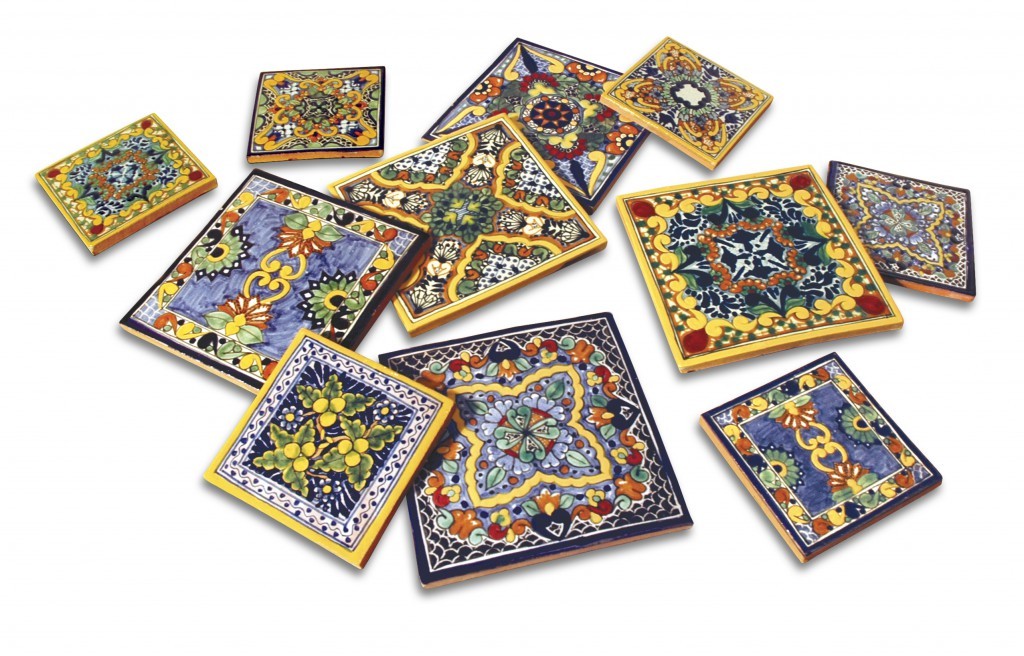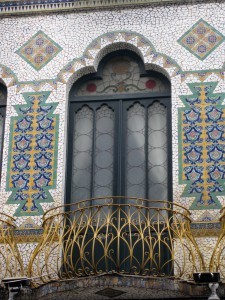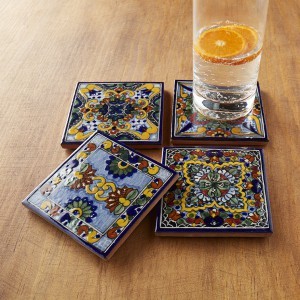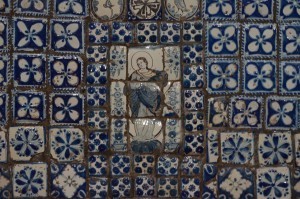The History of Talavera Tile

Today’s “True” Talavera tile and pottery comes from the rich black and white volcanic soils in and around Puebla, Mexico. Here the tradition and technique of hand-forming these tiles define this vivid craft. But Mexico hasn’t always been Talavera’s home. The history of Talavera spans centuries, cultures and continents.
Spanish Origins

The Church of Santo Domingo.
Source: samedifferentworld.blogspot.com
In the 15th and 16th centuries, the central Iberian town of Talavera de la Reina became internationally renowned for ceramics. They called it “La Ciudad de la Cerámica,” or the “The City of Ceramics.” The city’s designs owe a lot to the international population that resided there. This includes Dutch and Arab settlers that contributed new techniques, tools and tastes that ultimately informed the Talavera style.
When the city of Puebla, Mexico was established in 1531—just a decade after the conquest of the Aztec Empire—the production of ceramic goods came naturally to its people. Partly thanks to the abundance of quality clay and a long tradition of producing earthenware. The prehispanic cultures of Mexico did not, however, use a potter’s wheel and were unfamiliar with tin-glazing. Spaniards introduced both to them in the 16th century. Thus transforming their methods of making, painting, and glazing pottery with Talavera’s now trademark milky white glaze.
The Puebla people inherited their knowledge of the Talavera technique during construction of the Church of Santo Domingo, in 1571. According to many accounts, the Spanish monks called for craftsmen to cross the Atlantic Ocean from Talavera de la Reina. They wanted their monastery and church decorated in the way they were accustomed—with hand-painted tiles and religious figures. (The Santo Domingo was completed in 1611 and remains one of the most impressively ornate interiors in the world and a superb example of Mexican baroque.) Others say the Dominican friars themselves knew how to produce these tiles and taught locals.
We don’t precisely know how or why the Spanish craftsmen arrived in Puebla, but history verifies their presence. They flourished there during the 16th century. They established their workshops during the creation of many churches and monasteries. Very much worthy of a visit, the Puebla region is now a beautiful riot of colonial era buildings covered in Talavera tiles.
Mexican Ceramic Tiles
The Puebla craftspeople incorporated art forms and colors they loved with the new techniques they’d learned from Spanish settlers. This was how Mexican Talavera emerged.
The broader term, “Mexican maiolica,” sometimes encompasses Talavera. This refers to the Italian tin-glazing pottery technique that was introduced in the 14th century. Originally, the color spoke explicitly to its quality. Ceramics featuring the color blue were easily differentiated as being of the highest quality in the 16th and 17th centuries. As blue pigments were much more expensive. During the 18th century, it became more common to use green, mauve and yellow along with blues. Sourced from natural pigments, as they still are today in the authentic workshops. And it wasn’t just the color of Talavera that was important, but also the volume. The number of Talavera tiles on the facade of a building equated the prosperity of a family or a business. Hence, the saying “to never be able to build a house with tiles” fell into use. In other words, if you can’t build a house with tiles (azulejos), you haven’t amounted to anything in life.
Talavera pottery remains important to the Toledo province of Spain in which Talavera de la Reina is located, but those who are considered the authentic artisans reside exclusively in Mexico’s Puebla region. There, they employ precisely the same techniques that were used in the 16th century and collect their clay only from designated areas.
Not All Are Created Equal

Moroccan Midnight coasters
The Mexican state of Guanajuato also adopted the term “Talavera,” and this is what can get confusing. Pretty, yet quickly produced, it has little to do with the highly detailed, rigorously defined process that is required from authenticity, a process that is followed only in the Puebla area of Mexico and even requires the use of very specific volcanic soils found only in that geographical region. Other key differences include using commercial colors rather than the natural pigments used in authentic More commonly, people stamp Talavera and tile designs on the lesser quality tiles, rather than meticulously hand paint them. Not all Talavera tile is created equal. Consumers beware that much of what is called “Talavera” or “Talavera style” is an entirely different level of craftsmanship from true Talavera tile with its dedication to historical legacy and extremely high standards.
Though it can now call Mexico home, the style will always represent a melting pot of cultures—from Arabic to Italian, Spanish to Chinese, and of course Mexican. It’s also an important part of the Native Trails’ product line—as it has been since the founding years in the late 1990’s. In Talavera, we see many of our company values: a commitment to the earth, to our artisans and the joy of their craft, and to traditions which unite and thrill us. We are proud to continue the celebration of this ancient art form.

Installed Talavera Tile

